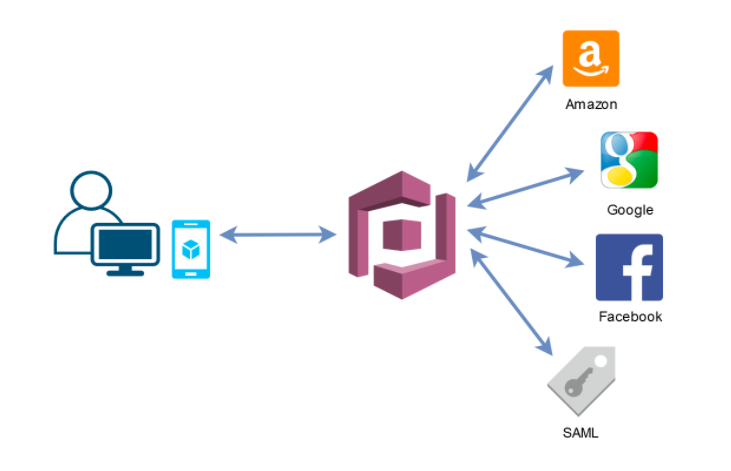Amazon Cognito
This is not an exhaustive documentation of all the existing AWS Services. These are summarized notes that I used for the AWS Certifications.
To see the complete documentation, please go to: AWS documentation
Overview
Cognito is used for giving users an identity to be able to communicate with a system.
-
Cognito User Pools
- Sign in functionality for the app users.
- Integrates with API Gateway.
-
Cognito Identity Pool (Federated Identity)
- Provides AWS credentials to users which want to access AWS resources directly.
- Integrates with Cognito User Pools as an identity provider.
-
Cognito Sync
- Used for synchronize data from a device to Cognito.
- Deprecated, replaced by AppSync.
AWS Cognito User Pools
-
Serverless database for users of an application.
-
Simple login provider: username (or email) / password combination.
-
Possibility to verify emails/phone numbers and add MFA.
-
Can enable Federated Identities (Facebook, Google, SAML, etc.).
-
This is not the same CIP (AWS Federated Identity)!
-
Sends back a JSON Web Token (JWT).
-
Can be integrated with API Gateway for authentication.

AWS Cognito Federated Identity Pools
-
Provide direct access to AWS resources from the client side.
-
Log in to a federated identity provider - or remain anonymous.
-
Get temporary AWS credentials from the Federated Identity Pool.
-
These credentials come with pre-defined IAM policies stating their permissions.
-
Examples:
- Provide temporary access to write to a S3 bucket using Facebook login.

AWS Cognito Sync (Deprecated)
-
Deprecated - use AWS AppSync.
-
Can be used for cross device synchronization from any platform: iOS, Android, etc.
-
It provides some offline capabilities, synchronization will happen when the device will come online.
-
Requires Federated Identity Pool in Cognito (not User Pool!).
-
Data is stored in datasets, each dataset can have up to 1MB of data. We can have up to 20 datasets to synchronize.